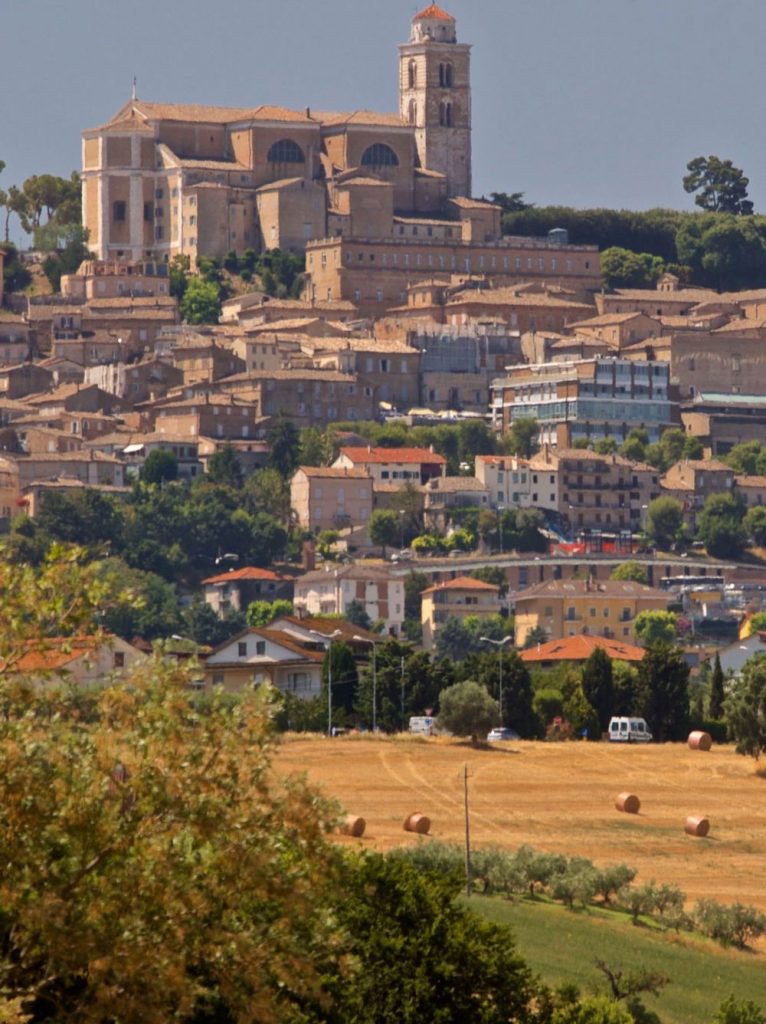
Fermo rises on the summit and along the slopes of Colle Sàbulo (319 m a.s.l.), so called since the time of the ancient Romans, probably because of its predominantly tuffaceous formation.
The heart of the city is the Renaissance Piazza del Popolo, formerly Piazza Grande, where the sixteenth-century Palazzo dei Priori is located, which houses the Civic Art Gallery (with important paintings from the Venetian and Marche schools, as well as the “Nativity” by Rubens) and the Hall del Mappamondo (which takes its name from the globe designed by the cartographer Moroncelli di Fabriano in 1713); the archaeological section “Dai Villanoviani ai Piceni” is housed within the same structure. Other buildings of considerable interest surround the square: the Palazzo degli Studi, which houses the “Spezioli” municipal library, one of the most important and distinguished in terms of consistency in Italy, and the Apostolic Palace, erected in 1532 as the residence of the governors and papal legates .
Fermo houses a very precious historical theater, the Teatro dell’Aquila, which ranks among the most impressive theaters of the eighteenth century in the Marche.
Testimony of the Roman Fermo are the Roman cisterns, an underground building from the Augustan age (40 AD), with a surface area of about 2,000 square meters, divided into 30 rooms placed on 3 parallel rows, built for the purpose of accumulating water.
Going up to the top of the Girfalco hill you reach the Cathedral, which preserves the splendid Romanesque-Gothic facade of 1227. Not to be missed are: the Church of San Francesco, which preserves the remains of frescoes by Giuliano da Rimini, one of the most important followers of Giotto; the Co-Cathedral Church of San Domenico, whose construction began in 1233 on the same area where the church of San Tommaso of Canterbury once stood; the Church of Sant’Agostino, one of the best known religious buildings in the Fermo area, embellished with frescoes from the Giotto-Rimini, Fabriano and Bolognese schools. Do not miss the museum of Palazzo Paccarone, with the “Tommaso Salvadori” Science Museum, which includes the ornithological collection, and the Silvio Zavatti Polar Museum.
The best known typical products of the Fermo area are the caciotta del Fermo, the ciauscolo and the cooked wine.
The frustingo is the typical Christmas cake of Fermo: the dough is based on dried figs, raisins, almonds, walnuts, cooked wine, flavored with the addition of cocoa, coffee, rum, grated orange and lemon peel, candied fruit. and spices like cinnamon and nutmeg. The most important event in Fermo is the Feast of Maria Assunta, celebrated on August 15, the date on which the Palio della Cavalcade of the Assumption takes place since 1982.
During the year, the Tipicità Festival celebrates the flavors and other excellences of Made in Marche.